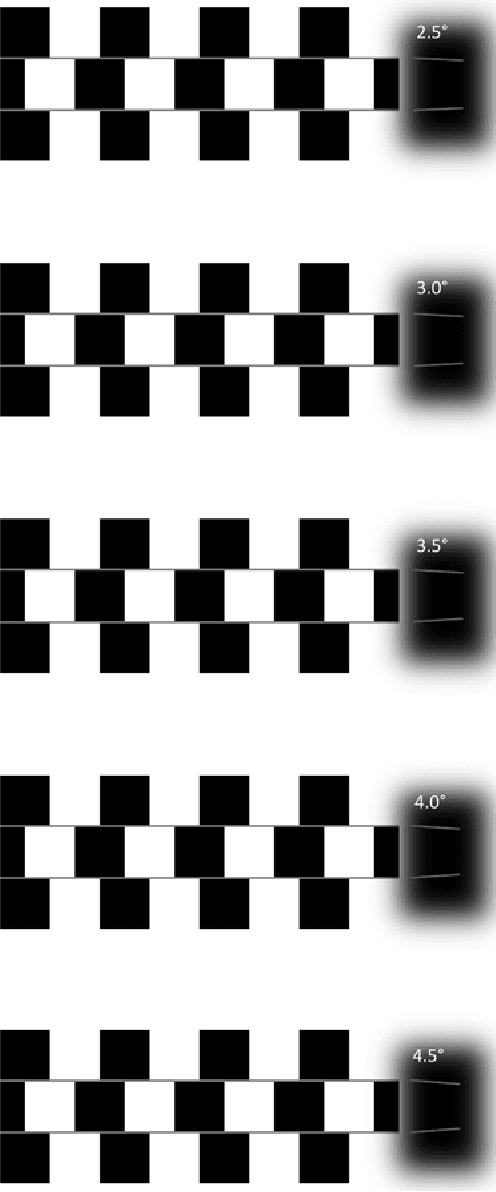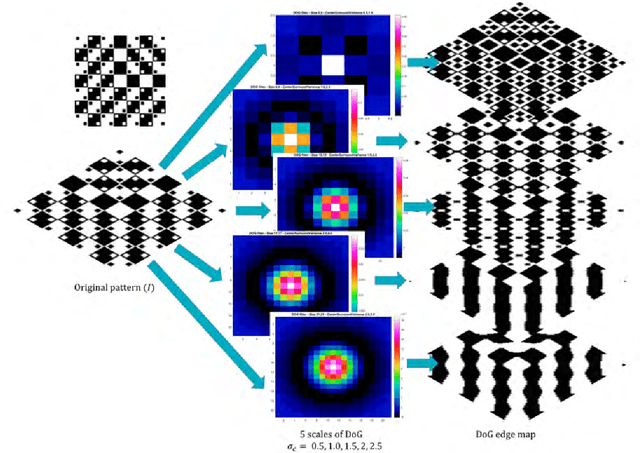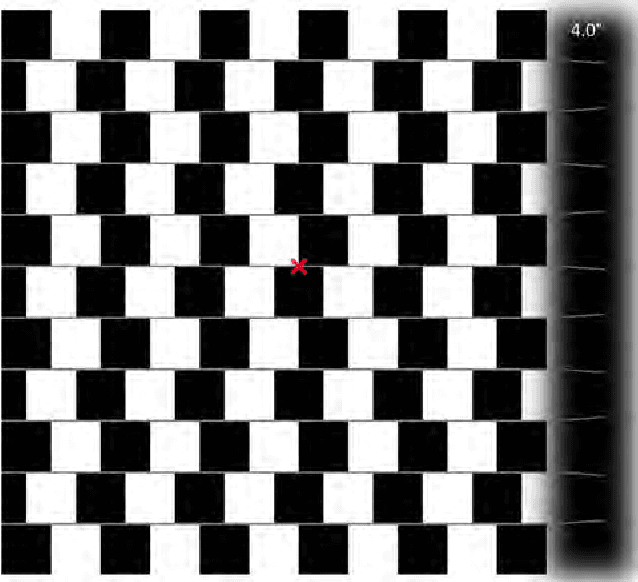A Predictive Account of Cafe Wall Illusions Using a Quantitative Model
Paper and Code
Aug 14, 2018



This paper explores the tilt illusion effect in the Cafe Wall pattern using a classical Gaussian Receptive Field model. In this illusion, the mortar lines are misperceived as diverging or converging rather than horizontal. We examine the capability of a simple bioplausible filtering model to recognize different degrees of tilt effect in the Cafe Wall illusion based on different characteristics of the pattern. Our study employed a Difference of Gaussians model of retinal to cortical ON center and/or OFF center receptive fields. A wide range of parameters of the stimulus, for example mortar thickness, luminance, tiles contrast, phase of the tile displacement, have been studied. Our model constructs an edge map representation at multiple scales that reveals tilt cues and clues involved in the illusory perception of the Cafe Wall pattern. We present here that our model can not only detect the tilt in this pattern, but also can predict the strength of the illusion and quantify the degree of tilt. For the first time quantitative predictions of a model are reported for this stimulus. The results of our simulations are consistent with previous psychophysical findings across the full range of Cafe Wall variations tested. Our results also suggest that the Difference of Gaussians mechanism is the heart of the effects explained by, and the mechanisms proposed for, the Irradiation, Brightness Induction, and Bandpass Filtering models.
 Add to Chrome
Add to Chrome Add to Firefox
Add to Firefox Add to Edge
Add to Edge